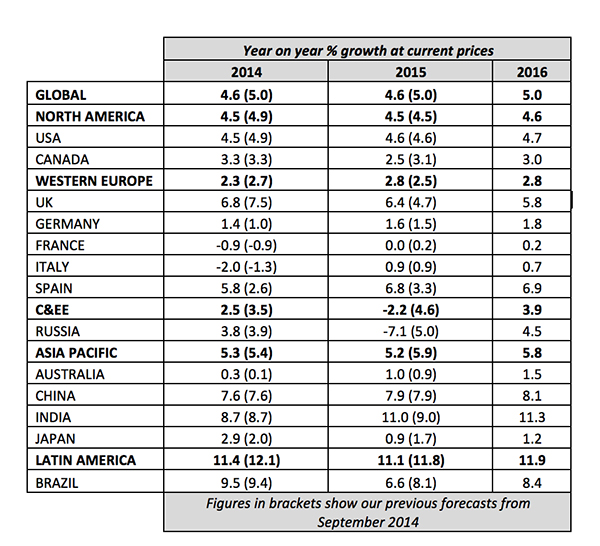25% Of All Ad Spend Will Belong To Digital
A bit of time ago we wrote a post about Econsultancy research that showed how digital marketing budgets will be rising in 2015. Since then, another study, this time by the folks at Carat (one of the world leaders in media planning and buying), has come out to actually back up those claims. Caret’s research is really making waves, as they announced last week that digital will account for at least a quarter of all ad spend in 2016. That said, as TV media power will dwindle by 2016, we at DirectIQ suppose this is something that we should have expected – especially as digital media is already beating spend predictions from September last year.
If Carat is correct, this will be the first time in history that digital accounts for at least a quarter of ad spend. It’s been predicted that in 2015 alone, marketers will spend $540 billion globally on advertising. Shockingly, of this money spent, there will be a year-over-year growth of 4.6% in just digital. This number is made further surprising as there is a general lack global events in 2015 in comparison to 2014 – which saw host to both the winter olympics and Fifa World Cup.
According to Jerry Buhlmann, CEO of Dentsu Aegis Network (Carat’s parent company), ?Carat’s latest advertising forecast gives us increased optimism for the outlook for global advertising spending? With harder times behind us, negative growth markets are pleasingly now a minority, and collectively we can look ahead to 2016 with positive growth predicted for all key markets.? This year, Digital spend will grow by 15.7%, and It’s expected that the year-on-year growth in 2016 will be 5%. Take a look at the graphic below for year on year % growth at current prices, by country.

Here’s the best way to explain the huge growth in digital: In terms of ad spend, Carat’s research shows that a 50% increase in ad-spending took place in the mobile sphere, and 22% growth can be found in online video budgets. According to Jerry Buhlmann, ?With a quarter of the global population now owning and relying on their smartphones daily, they are our second brain in our hands. Mobile dominates the way consumers access information, view content, browse products, and purchase goods.? As more of the global population adopts smartphones and tablets and wearables. that number should continue to steadily rise over time.









